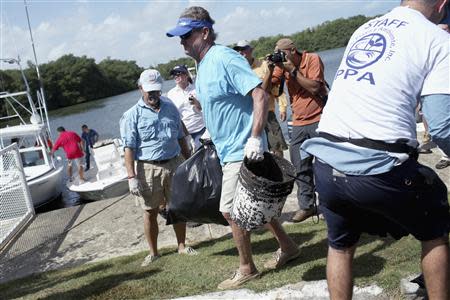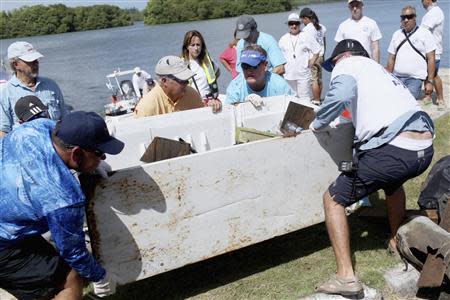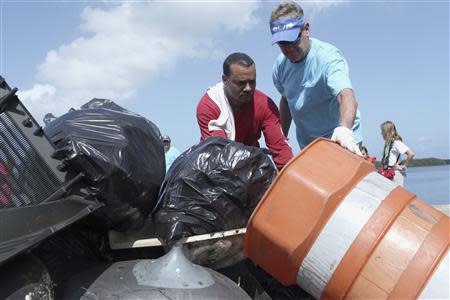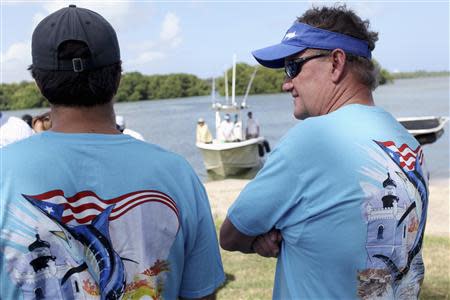Estuaries in Puerto Rico's capital get 'mega clean up'
SAN JUAN, Puerto Rico (Reuters) - A flotilla of fishing skiffs and kayaks plied through the channels and lagoons that comprise the San Juan estuary system Saturday, as volunteers dove beneath bridges and trudged through the thick mangrove forest lining its coasts. With egrets, herons and terns circling overhead and large tarpon breaking through the lagoon's surface, the estuary system evokes a tropical paradise. A closer look shows its green waters are ripe with an algae bloom, the result of sewer and storm water runoff that hide tons of trash submerged in the estuary and buried along its coastlines. Some 300 volunteers collected thousands of pounds of garbage - refrigerators, tires, shopping carts, toys and countless plastic bottles - in the second "mega cleanup" of the San Juan estuary system, an inland waterway that snakes around the international airport and connects several bodies of water that cut across Puerto Rico's capital. "Plastics are the big problem. They last forever," said Ivette Braegger, 42, a fishing enthusiast who participated in the cleanup with her husband and two children. Leading the volunteers, who ranged from youths to elderly fishermen, was marine wildlife artist and conservationist Dr. Guy Harvey. "Flushing out the estuary is the solution. They say it will cost $600 million to dredge it, but it would be worth every penny. This could be an ecotourism paradise," Harvey said. Environmental Quality Board President Laura Velez said much of the trash appeared to be thrown directly into the coastal area by residents from area roadways. She said her agency has submitted legislation to toughen enforcement of Puerto Rico's anti-littering laws. Solid Waste Management Authority Executive Director Agustin Carbo Lugo said his agency was looking to ban imports of low-quality used-tires, since 18,000 a day are disposed of in Puerto Rico. "Here you have one of the top inland waterways in the Caribbean. It's a beautiful stunning mangrove forest; yet it is full of trash," added Antonio Fins, executive director of the Guy Harvey Foundation. Israel Umpierre, who organized the event with his wife Annettte Ramirez, both attorneys, said he learned to fish in the estuary system and always wanted to give back to it. However, it was not until Doug Olander, an editor at Sport Fishing magazine, wrote about the sorry conditions of the lagoon following a kayak fishing trip here, that he garnered the support to pull off a cleanup. Last March, during the first cleanup of the area, some 500 volunteers collected 30,000 pounds of trash in about four hours, Umpierre said. A Facebook page called Pesca, Playa y Ambiente (Fish, Beach and Environment) that was used to organize the first event has now morphed into a non-profit corporation that will institutionalize semi-annual cleanups and undertake longer term projects aimed at marine conservation and education. Feasibility and environmental studies are under way for a major federally funded dredging project along the estuary to restore water flow and improve water quality and biodiversity, but the cost is estimated at more than $500 million. (Reporting by Reuters in San Juan. Editing by David Adams and Doina Chiacu)







